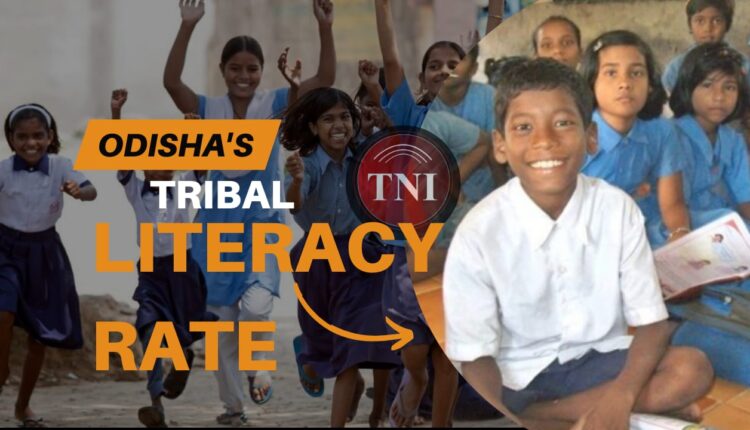Odisha’s Tribal Literacy Rates: From Concerning To Creating Hope
Located on the eastern coast of India, Odisha is home to one of the largest tribal populations in the country, with nearly 22% of its total population belonging to over 60 different tribal groups.
Tribal communities in Odisha are an integral part of the state’s rich cultural and social fabric. Located on the eastern coast of India, Odisha is home to one of the largest tribal populations in the country, with nearly 22% of its total population belonging to over 60 different tribal groups. These indigenous communities, often referred to as “Adivasis,” have distinct languages, cultures, traditions, and ways of life that have been shaped by their deep connection to the land and nature.
The literacy rates among Odisha’s tribal communities have seen significant improvements in recent years, thanks to a combination of government initiatives, NGOs, and community efforts. The state government has implemented various policies and programs aimed at improving education for tribal communities.
To ensure better engagement and retention, some schools incorporate tribal languages and culture into the curriculum. This helps students relate better to what they are learning, while still gaining proficiency in the state’s official language Odia.
How State Government Is Saving The Tribal Future Through Education?
The government has established a network of Ashram Schools and Tribal Residential Schools that cater specifically to tribal children. These schools offer free education, accommodation, and food, reducing barriers to learning such as the lack of nearby schools and the cost of education.
he government provides scholarships and financial incentives for tribal students to encourage them to stay in school. Many programs are specifically designed for girls, who historically had lower enrollment and retention rates.
The implementation of the Mid-Day Meal scheme ensures that students receive free meals, which improves school attendance and retention, especially in rural areas where children might otherwise have to skip school to help with household chores.
Tribal communities are becoming more involved in the educational process, leading to better awareness and higher enrollment rates. Tribal elders and leaders are increasingly supportive of education, viewing it as a way to uplift their communities.
Tribal communities are encouraged to take an active role in supporting education. Through awareness campaigns and village-level meetings, families are being educated about the importance of schooling for children, particularly girls.
Many tribal groups in Odisha speak their own languages and dialects. To address language barriers, the government has introduced education in local languages. In some schools, children learn in their native tongue in the early years before transitioning to other languages, making it easier for them to grasp concepts and stay engaged.
Many schools in tribal areas have received infrastructural support, including better classrooms, sanitary facilities, and transportation. The state has also made efforts to establish more schools in remote locations, ensuring that children don’t have to travel long distances to attend school.
Support Independent Journalism? Keep us live.
Odisha has introduced robust data systems that track the literacy rates and school attendance, helping authorities identify and address gaps in education. These monitoring systems also enable the government to allocate resources more effectively to areas with the highest needs.
The Role Of Non-government Organizations
NGOs are running literacy and awareness programs specifically focused on tribal populations. These programs often work in collaboration with local communities to offer adult education, skill-building initiatives, and evening classes for children who might not attend school regularly.
Several NGOs have also introduced mobile learning programs and digital education tools that make learning more accessible. For instance, mobile apps and tablets are being used in remote tribal areas to teach basic literacy and numeracy, reaching children in villages where traditional infrastructure may be lacking.
Women and Girl Child Education
The education of girls has become a priority, and there have been significant efforts to increase female literacy rates, which are traditionally lower in tribal areas.
Various scholarships, hostel facilities, and specialized programs aim to support girls’ education. Girls’ education is seen as a means of breaking the cycle of poverty and improving the social and economic status of entire families.
Many tribal communities are seeing an increasing number of women trained as teachers, especially within their own communities. Women teaching other women and children helps overcome traditional gender barriers and ensures cultural sensitivity in the teaching process.
The Challenges They face
While these efforts have significantly improved literacy rates in Odisha’s tribal communities, challenges still remain. Tribal children often face challenges such as discrimination or social exclusion, which can affect their learning experience. Despite increasing enrollments, dropout rates, especially among girls, remain a challenge, often due to factors such as early marriage, child labor, and family poverty.
Odisha is working on integrating children with special needs and children from remote areas into mainstream education. This ensures that even children from marginalized tribes can access education alongside their peers.
Odisha has made remarkable strides in improving literacy rates among its tribal population, thanks to a combination of government initiatives, community engagement, NGO efforts, and focused programs for girls and marginalized groups. However, ongoing efforts are required to address remaining gaps and ensure the sustainable development of education in tribal areas.


Comments are closed.